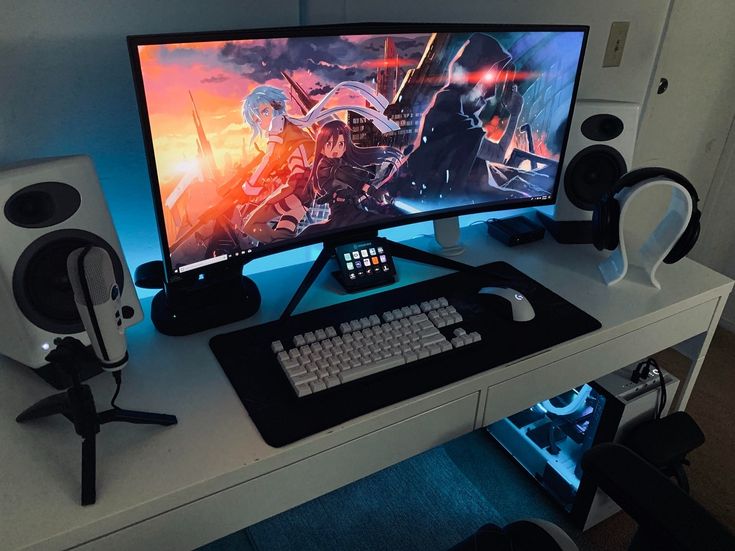Introduction
Gaming monitors are essential for a great gaming experience. They impact how you perceive the game and how well you can perform. With so many options available, finding the best gaming monitor can be a daunting task. This comprehensive guide will help you understand everything you need to know about gaming monitors, including key features, types, and recommendations for different budgets and gaming needs. By the end of this article, you will be equipped with all the information needed to make an informed purchase.
Understanding Gaming Monitors
What is a Gaming Monitor?
A gaming monitor is a display device specifically designed to meet the demands of gamers. Unlike regular monitors, gaming monitors are optimized for high refresh rates, low response times, and advanced technologies that enhance visual quality and gameplay experience.
Key Features of a Gaming Monitor
1. Refresh Rate
The refresh rate, measured in Hertz (Hz), indicates how many times per second the monitor updates the image. Higher refresh rates (such as 144Hz, 240Hz) result in smoother gameplay, especially in fast-paced games.
2. Response Time
Response time, measured in milliseconds (ms), refers to how quickly a pixel can change from one color to another. Lower response times reduce motion blur and ghosting, providing clearer images during fast movements.
3. Resolution
Resolution determines the clarity and detail of the images on the screen. Common resolutions include Full HD (1920×1080), Quad HD (2560×1440), and 4K (3840×2160). Higher resolutions provide more detailed and immersive visuals.
4. Panel Type
There are three main types of panels used in gaming monitors: Twisted Nematic (TN), In-Plane Switching (IPS), and Vertical Alignment (VA). Each type has its pros and cons regarding color accuracy, response time, and viewing angles.
5. Screen Size and Aspect Ratio
The screen size and aspect ratio impact your gaming experience. Larger screens provide a more immersive experience, while different aspect ratios (such as 16:9, 21:9) can affect your field of view.
6. Adaptive Sync Technologies
Adaptive Sync technologies, such as NVIDIA G-SYNC and AMD FreeSync, reduce screen tearing and stuttering by synchronizing the monitor’s refresh rate with the GPU’s frame rate.
7. HDR Support
High Dynamic Range (HDR) enhances the contrast and color range, providing more vibrant and realistic visuals. Monitors with HDR support can display a wider range of colors and greater detail in dark and bright scenes.
Why a Good Gaming Monitor Matters
A good gaming monitor can significantly enhance your gaming experience by providing smooth visuals, reducing input lag, and offering a more immersive and enjoyable experience. It can also give you a competitive edge in fast-paced games where reaction time and visual clarity are crucial.
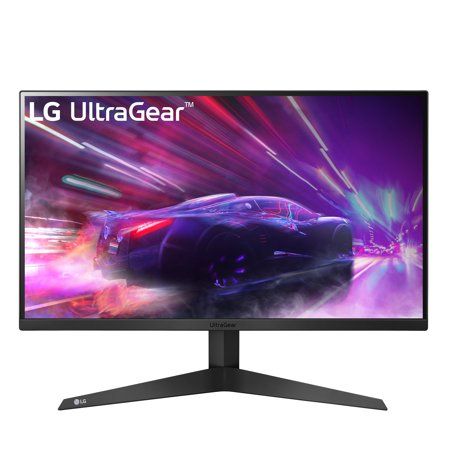
Types of Gaming Monitors
TN (Twisted Nematic) Panels
Advantages
- Fast Response Time: TN panels typically have the fastest response times, making them ideal for competitive gaming.
- Affordable: TN monitors are generally more budget-friendly compared to IPS and VA panels.
Disadvantages
- Poor Color Accuracy: TN panels often have limited color accuracy and color reproduction.
- Narrow Viewing Angles: The image quality degrades significantly when viewed from angles other than straight-on.
IPS (In-Plane Switching) Panels
Advantages
- Superior Color Accuracy: IPS panels offer excellent color reproduction and wide color gamuts.
- Wide Viewing Angles: The image quality remains consistent when viewed from different angles.
Disadvantages
- Slower Response Times: IPS panels typically have slower response times compared to TN panels, which can result in more motion blur.
- More Expensive: IPS monitors tend to be more expensive than TN monitors.
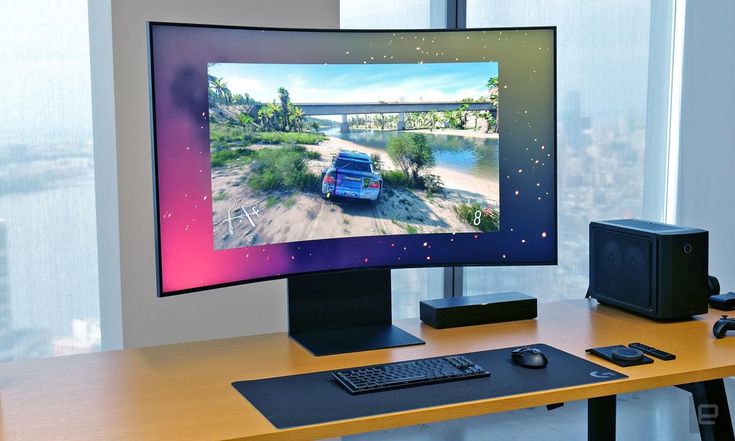
VA (Vertical Alignment) Panels
Advantages
- Excellent Contrast Ratios: VA panels offer the best contrast ratios, providing deeper blacks and brighter whites.
- Good Color Accuracy: While not as accurate as IPS panels, VA panels still offer good color reproduction.
Disadvantages
- Moderate Response Times: VA panels have response times that are generally faster than IPS but slower than TN panels.
- Potential Ghosting: Some VA monitors may exhibit ghosting effects, especially in dark scenes.
OLED (Organic Light Emitting Diode) Panels
Advantages
- Perfect Blacks: OLED panels can achieve perfect black levels since each pixel can be individually turned off.
- Excellent Color Accuracy: OLED monitors offer superior color accuracy and vibrant colors.
Disadvantages
- Expensive: OLED monitors are typically very expensive.
- Risk of Burn-In: Static images can cause burn-in on OLED screens if displayed for long periods.
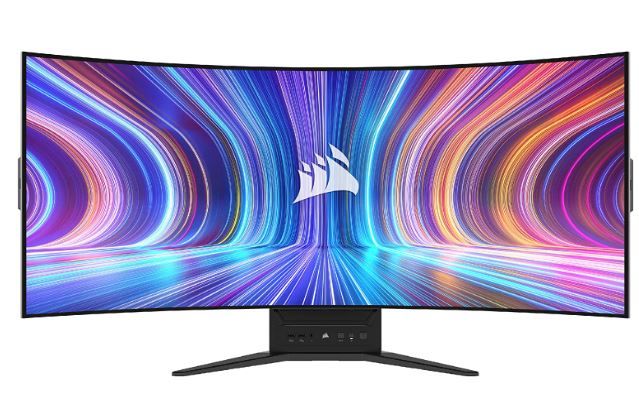
Choosing the Right Monitor for Your Needs
Consider Your Gaming Preferences
Competitive Gaming
- High Refresh Rate: Aim for a monitor with at least a 144Hz refresh rate to ensure smooth gameplay.
- Low Response Time: Look for monitors with a response time of 1ms or less to reduce motion blur.
Casual Gaming
- Balanced Features: A monitor with a good balance of refresh rate, response time, and color accuracy will suffice.
- IPS or VA Panels: Consider IPS or VA panels for better color reproduction and viewing angles.
Immersive Gaming
- Large Screen and High Resolution: Opt for a larger screen size (27 inches or more) and higher resolution (1440p or 4K) for a more immersive experience.
- Wide Aspect Ratio: Monitors with a 21:9 aspect ratio can enhance immersion by providing a wider field of view.
Budget Considerations
Budget Monitors
- TN Panels: Affordable and suitable for competitive gaming.
- Basic Features: Focus on essential features like refresh rate and response time without breaking the bank.
Mid-Range Monitors
- IPS or VA Panels: Offers a good balance of performance and visual quality.
- Additional Features: Look for monitors with adaptive sync, higher resolutions, and better color accuracy.
High-End Monitors
- Premium Panels: Consider IPS, VA, or OLED panels with advanced features.
- Top Performance: High refresh rates (240Hz or more), 4K resolution, HDR support, and extensive connectivity options.
Top Gaming Monitors in 2023
Best Overall Gaming Monitor
ASUS ROG Swift PG279QZ
- Panel Type: IPS
- Resolution: 2560×1440 (QHD)
- Refresh Rate: 165Hz
- Response Time: 4ms
- Adaptive Sync: G-SYNC
- Screen Size: 27 inches
Best Budget Gaming Monitor
AOC C24G1
- Panel Type: VA
- Resolution: 1920×1080 (Full HD)
- Refresh Rate: 144Hz
- Response Time: 1ms
- Adaptive Sync: FreeSync
- Screen Size: 24 inches
Best High-End Gaming Monitor
Alienware AW3418DW
- Panel Type: IPS
- Resolution: 3440×1440 (UWQHD)
- Refresh Rate: 120Hz
- Response Time: 4ms
- Adaptive Sync: G-SYNC
- Screen Size: 34 inches
Best 4K Gaming Monitor
Acer Predator X27
- Panel Type: IPS
- Resolution: 3840×2160 (4K)
- Refresh Rate: 144Hz
- Response Time: 4ms
- Adaptive Sync: G-SYNC HDR
- Screen Size: 27 inches
Best Ultrawide Gaming Monitor
LG 34GK950F
- Panel Type: IPS
- Resolution: 3440×1440 (UWQHD)
- Refresh Rate: 144Hz
- Response Time: 5ms
- Adaptive Sync: FreeSync 2
- Screen Size: 34 inches
Best HDR Gaming Monitor
Samsung Odyssey G7
- Panel Type: VA
- Resolution: 2560×1440 (QHD)
- Refresh Rate: 240Hz
- Response Time: 1ms
- Adaptive Sync: G-SYNC Compatible, FreeSync Premium Pro
- Screen Size: 32 inches
Best Portable Gaming Monitor
ASUS ROG Strix XG17AHPE
- Panel Type: IPS
- Resolution: 1920×1080 (Full HD)
- Refresh Rate: 240Hz
- Response Time: 3ms
- Adaptive Sync: Adaptive Sync
- Screen Size: 17.3 inches
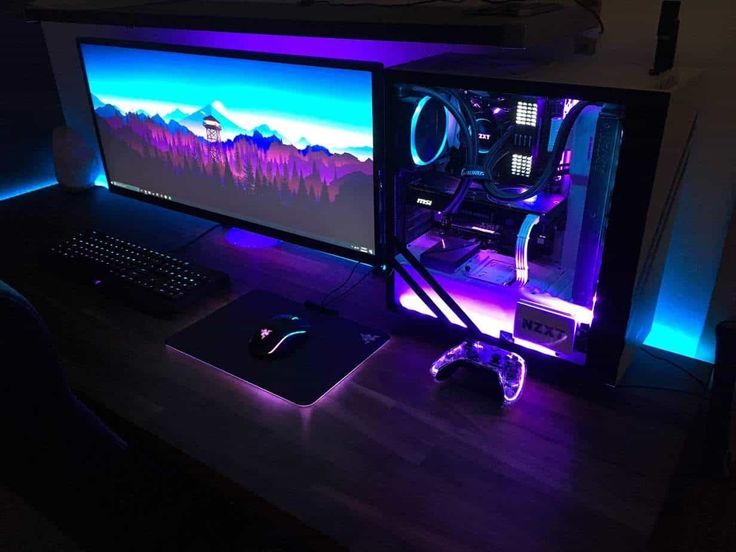
Setting Up Your Gaming Monitor
Unboxing and Physical Setup
- Unboxing: Carefully unbox the monitor and remove all protective materials.
- Stand Assembly: Assemble the stand and attach it securely to the monitor.
- Placement: Place the monitor on a stable surface at a comfortable viewing height.
Connectivity and Cable Management
- Connections: Connect the monitor to your PC using the appropriate cables (HDMI, DisplayPort, USB-C).
- Power: Plug the power cable into the monitor and an electrical outlet.
- Cable Management: Use cable ties or clips to organize and secure the cables for a tidy setup.
Adjusting Monitor Settings
- Resolution and Refresh Rate: Set the resolution and refresh rate to the monitor’s maximum supported values through your operating system settings.
- Color Calibration: Use built-in calibration tools or third-party software to adjust color settings for optimal accuracy.
- Game Mode: Many gaming monitors have preset game modes that optimize settings for different types of games (e.g., FPS, RTS, RPG).
Ergonomics
- Height and Tilt: Adjust the monitor’s height and tilt to ensure a comfortable viewing angle.
- Distance and Angle: Position the monitor at an arm’s length away and directly in front of you to reduce eye strain.
Optimizing Your Gaming Experience
Software Tweaks
- Graphics Drivers: Keep your graphics drivers updated to ensure compatibility and performance.
- Game Settings: Adjust in-game settings for the best balance between performance and visual quality.
Hardware Enhancements
- Graphics Card: Ensure your graphics card is capable of supporting the monitor’s resolution and refresh rate.
- Peripheral Integration: Use gaming peripherals like keyboards, mice, and headsets that enhance your overall gaming experience.
Performance Monitoring
- FPS Counter: Use built-in game tools or third-party software to monitor your frames per second (FPS).
- System Monitoring: Keep an eye on your system’s performance metrics (CPU, GPU usage) to identify potential bottlenecks.
Troubleshooting Common Issues
Screen Tearing
- Solution: Enable V-Sync or use a monitor with adaptive sync technologies (G-SYNC, FreeSync) to eliminate screen tearing.
Ghosting and Motion Blur
- Solution: Lower the response time setting in the monitor’s menu or upgrade to a monitor with a faster response time.
Dead Pixels
- Solution: Use pixel repair software to attempt fixing dead pixels or contact the manufacturer for warranty support.
Connectivity Problems
- Solution: Ensure all cables are securely connected, try different ports, or replace faulty cables.
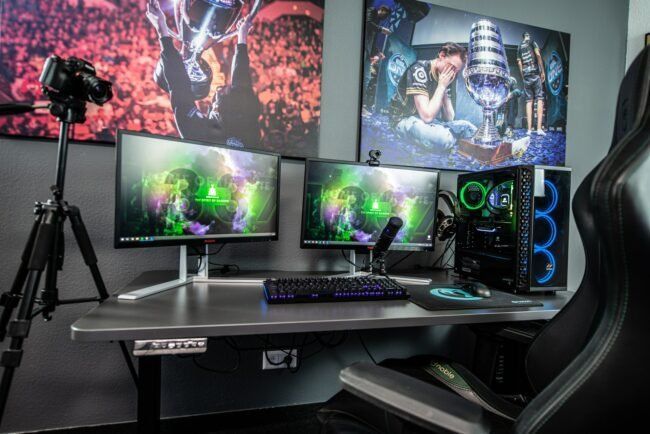
Future Trends in Gaming Monitors
Higher Resolutions
- 8K Monitors: The future may see more 8K gaming monitors becoming mainstream, providing even more detail and clarity.
Higher Refresh Rates
- 360Hz and Beyond: Monitors with refresh rates of 360Hz and higher are already entering the market, offering unprecedented smoothness.
Advanced Technologies
- MicroLED and Quantum Dot: Emerging display technologies like MicroLED and Quantum Dot promise better color accuracy, brightness, and energy efficiency.
Enhanced Connectivity
- USB-C and Thunderbolt 4: These advanced connectivity options will provide more flexibility and higher data transfer speeds for gaming setups.
Reviews and Recommendations
User Reviews
- Research: Read user reviews and watch video reviews to get real-world insights into the performance and reliability of different gaming monitors.
Expert Reviews
- Tech Websites: Follow reviews from reputable tech websites and publications for professional assessments and comparisons.
Personal Recommendations
- Community Feedback: Engage with gaming communities and forums to get personal recommendations and advice from other gamers.
Conclusion
Choosing the best gaming monitor involves considering a variety of factors, including refresh rate, response time, resolution, and panel type. By understanding these key features and assessing your specific gaming needs, you can make an informed decision that enhances your gaming experience. Whether you are a competitive gamer seeking the fastest response times or a casual gamer looking for vibrant visuals, there is a perfect gaming monitor out there for you.
Remember to consider your budget and preferences, read reviews, and set up your monitor correctly for optimal performance. As technology advances, gaming monitors will continue to evolve, offering even more exciting features and capabilities.
Investing in a high-quality gaming monitor can significantly enhance your gaming experience, providing smoother gameplay, better visuals, and a more immersive environment. With the right monitor, you can elevate your gaming to new heights and enjoy the best that modern games have to offer.

